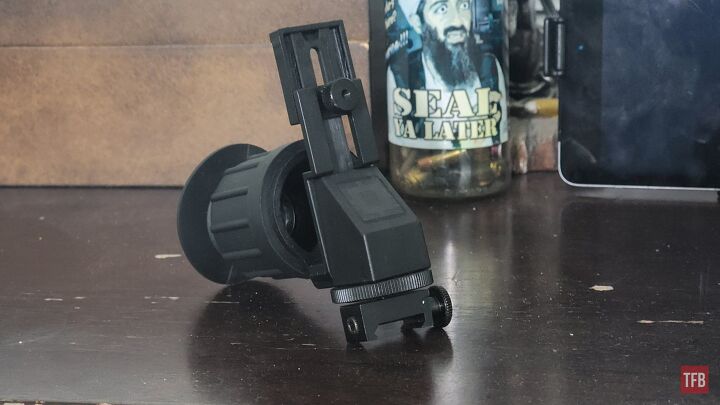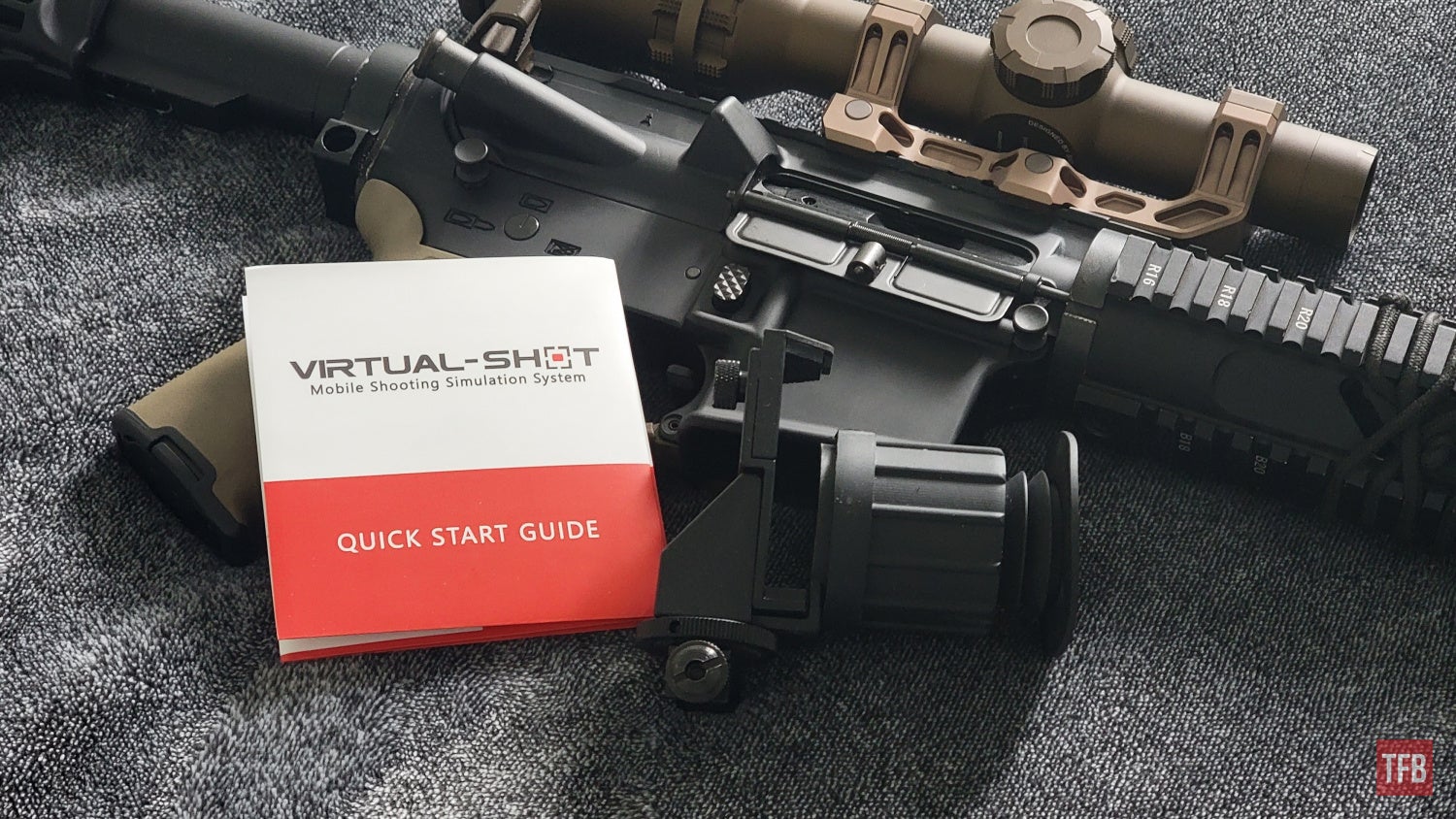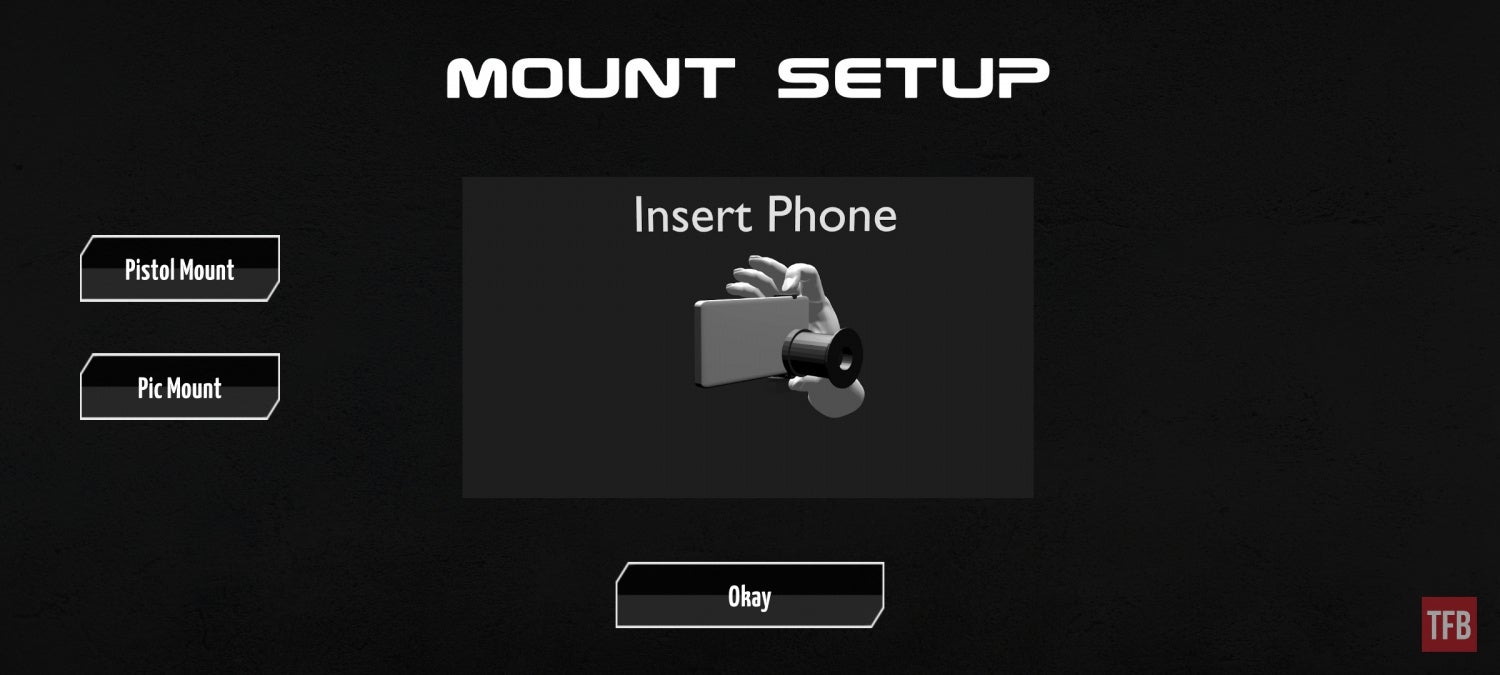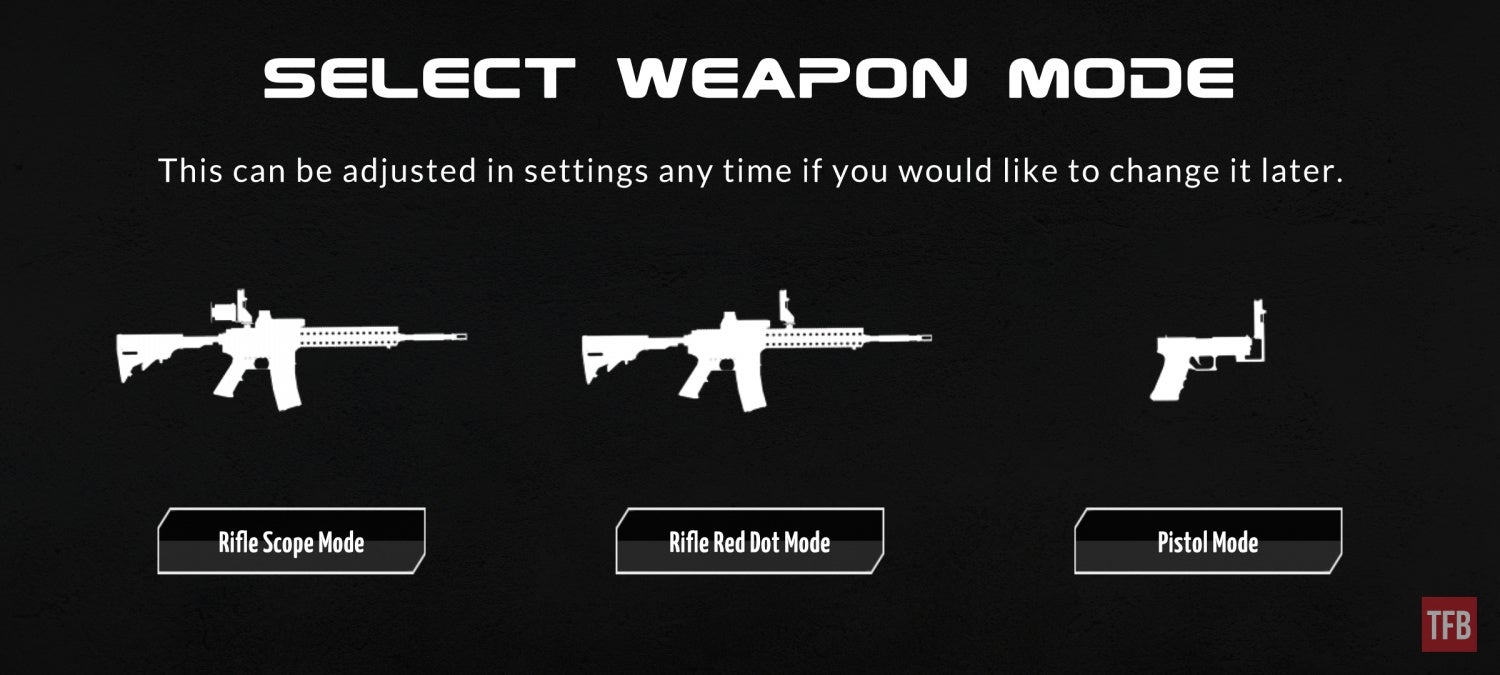Last year’s ammunition crisis is probably over but we’re still left with its lingering effects. Despite the cost of ammunition, the importance of training and practice still hasn’t changed and that is why many have adopted the use of dry fire training devices like the Mantis X system, or even the Stikeman Laser Firearms training system. These systems can be a great training tool whether you’re at home or traveling and can be a solid supplement to live-fire training exercises. Virtual-Shot is one of the newer training simulation devices on the market and it combines dry fire practice with augmented reality technology through the use of your phone to provide you with a fun method of practice that you can do from the comfort of your home. Today we’ll be reviewing the Virtual-Shot Mobile Shooting Simulation System and its associated mobile application to see how it stacks up against the current lineup of other at-home firearms training devices.
More Training Devices @ TFB:
- [IWA 2022] Umarex’s Glock Paintball and Air Pistols
- Marine Corps Prioritizes Synthetic Training Systems
- Dry Fire in the 21st Century – Laser Training Cartridges
TFB Review: Virtual-Shot Mobile Shooting Simulation System
Virtual-Shot is a combination of an eyepiece and mobile application that is available for either Android or iOS devices. Virtual-Shot has both rifle and pistol training simulator rigs that can attach to either the top Picatinny rail of your rifle or the dust cover rail on your pistol. Today we’ll be reviving just the rifle version and it’s worth mentioning here that you don’t even need a real firearm for this system to work. According to Virtual-Shot, the Picatinny Mount (mk1) system can be used on everything from firearms to gel blasters, and even airsoft guns.
This adaptability opens up training opportunities for restrictive nations and states and also allows for more realistic follow-up shot times as opposed to having to re-rack the bolt after every shot has been fired. A couple of other neat features that Virtual-Shot incorporates include several virtual ranges and modes that make training more exciting and can actually even be fun.
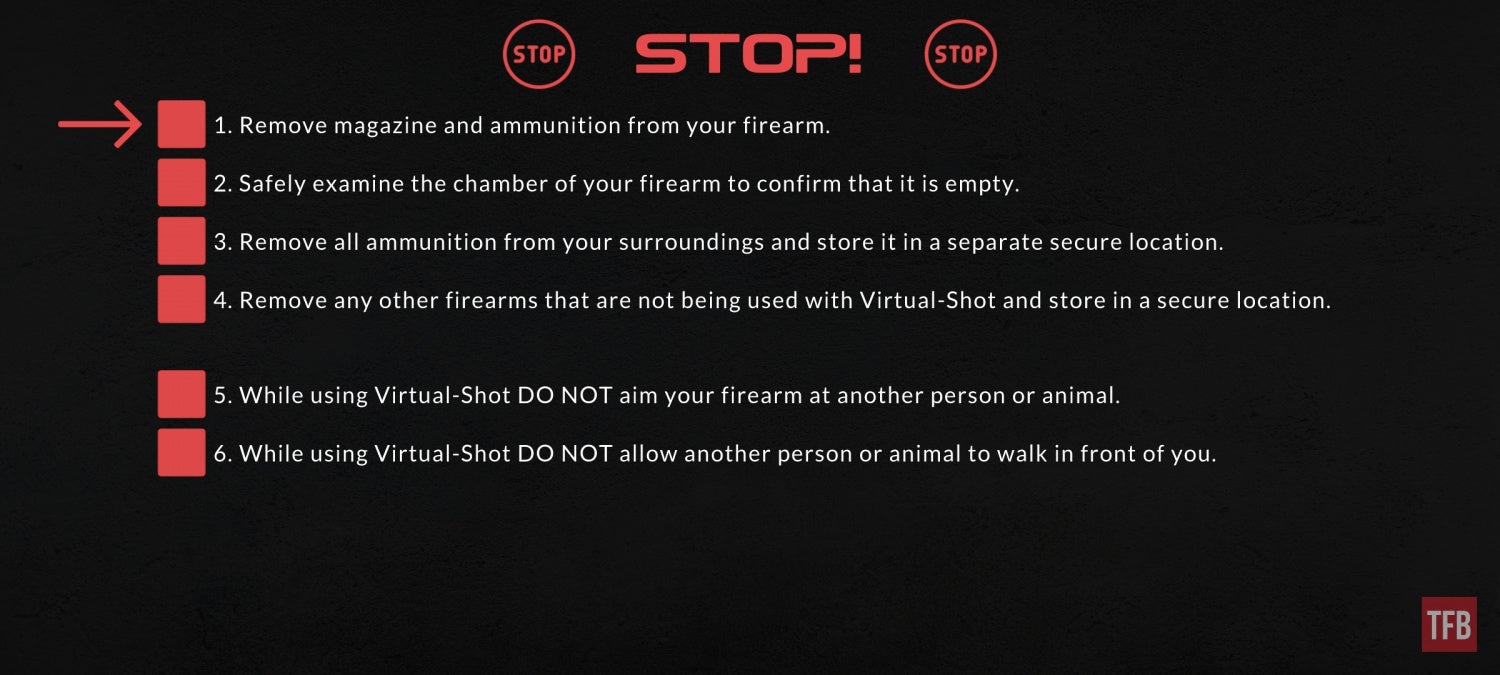
TFB REVIEW: Virtual-Shot Mobile Shooting Simulation System
The app and eyepiece have been developed by a team of former Australian infantry officers. The goal of the Virtual-Shot system was to prepare soldiers to be more accurate marksmen while also encouraging faster target acquisition. Using their skills learned in the Australian Army combined with software development skills, the Virtual-Shot Mobile Shooting Simulation was born and is now accessible to everyone who wants to train to be a better marksman.
Setup
The Virtual-Shot system comes with a Picatinny mounted cell phone rig that incorporates an eyepiece, and a brief but detailed start-up guide that also contains the code for you to download the mobile application and unlock all of its features. The initial setup took me about 5-minutes. Your phone attaches to the Picatinny rig and can be adjusted for left or right-handed use pretty quickly. I have a larger Samsung Galaxy S21 Ultra phone and that is about as big as you can get the mount to open up. In fact, I had to remove my cell phone from its case in order to get it to fit – keep this in mind as newer, larger phones may not fit within the system.

TFB REVIEW: Virtual-Shot Mobile Shooting Simulation System
After registering your account, and clearing your training space from ammunition, magazines, and other firearms, you can mount your phone in the rig and start working through the 100+ training situations contained within the Virtual-Shot app. There are options for you to work within metric or imperial units and the system even has a built-in ballistic calculator that simulates bullet drop that can be customized to a specific load or picked from a list of preset popular calibers like .223 Remington.

TFB REVIEW: Virtual-Shot Mobile Shooting Simulation System
After tweaking your settings, you can hop right into any of the many training scenarios or “mini-games.” Naturally, I picked “Black Hawk Down,” which was located under the mini-games section. The goal here is to stay alive as long as possible and gain as many kills as possible. I picked one of my ARs with a cassette style trigger in it that has a very distinct and loud “click” that doesn’t require you to rest the bolt to hear – I thought this would be great for pairing it with the mode that is normally reserved for airsoft guns and gel blasters.
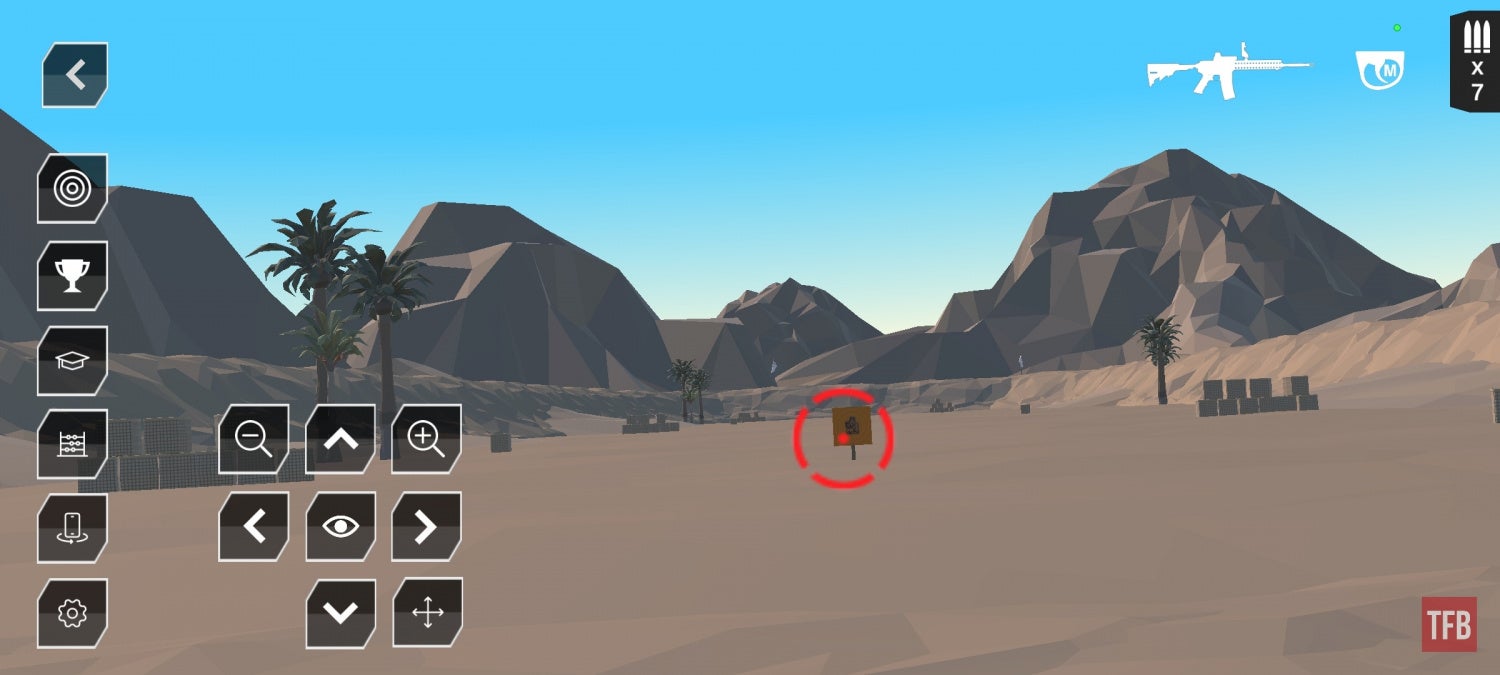
There are options to change the impact point of the reticle so that it can co-witness with existing iron sights. Reticles can also be changed to match your preference.
User Experience
Getting the training started is quite easy and each scenario comes with its own set of instructions and goals. For the Black Hawk Down scenario, all we had to do was survive as long as possible against a wave of incoming enemies. Using the Eye Cup allows for more accuracy and there are several different reticles that can be picked from to match whatever type of scope or optic that you’d like. Since I picked to use “red dot” mode, the system just makes use of my existing red dot which can be co-witnessed with the aiming reticle within the app using its controls – it’s quite simple and extremely accurate.
You’ll notice in the above video during the 2nd section (Black Hawk Down) that the gun fires off at random moments, this was the cell phone mic picking up external noise and causing premature shots. If you’re going to use this system, use it in a quiet place!
The Virtual-Shot system uses a combination of accelerometer, microphone, and GPS measuring tools in order to orient you within the virtual world. This means that when your gun goes down, your view goes down, etc. I found that the default shot detection sensitivity was a bit too high and the slightest noises including the ones that the app generated itself were enough to trigger the shot detection – this led to a lot of missed shots initially. After a brief adjustment, this wasn’t a problem anymore.
I also found that the Eye Cup view was less than stellar and turned out to be quite fuzzy at times and I think this simply has to do with the fact that the magnifying lens used doesn’t allow for any type of focus adjustment. But for a $100 unit, I suppose I can’t be asking for features that are normally found on much more expensive optics – for the purposes of training, it was more than enough for me.

TFB REVIEW: Virtual-Shot Mobile Shooting Simulation System
I had a couple of instances where the system would lag behind and wind up facing me in a completely different direction and I think this has to do with the processing requirements of the application. After closing other applications that were using processing power, this problem happened less frequently but it did still happen.
Final Thoughts
Virtual-Shot is an interesting tool. The system provides you with a reactive and 360-degree virtual world to practice in but to use it with real firearms requires you to break your grip and rack the slide unless you have specific dry-fire equipment that doesn’t force you to do this. I found the system to be best suited for close-range rifle work within the 100-yard mark as at greater ranges the sensitivity of the accelerometer and GPS tended to make the screen shake too much to make consistent precise shots. However, despite that, the ballistic drop calculator worked pretty well and there is even an ACOG reticle in there that works perfectly.

TFB REVIEW: Virtual-Shot Mobile Shooting Simulation System
So who is the Virtual-Shot Mobile Shooting Simulation for? If you’re someone who can’t make it to the range often or likes to turn your training into a game, I think you could have a lot of fun with this while building up your skills. If you’re younger and just want something to fool around with at home with your airsoft guns, I think you could benefit from this system as well. Personally, I think I prefer the laser training devices I’ve been using so far as they offer me a way to train with handguns while at home and also don’t require me to mount my phone to my gun.
At the very least, I think Virtual-Shot might be a great training tool for you and your kids. It provides you with an inexpensive and safe way to train at home without the need to drive long hours to the range and shoot expensive live ammunition when you don’t feel like doing so. If I can ever work out the jittering issues, I think this would be a great way to train for long-range shooting with the included ballistic drop features. However, I’d like to hear your thoughts on this. What do you think of the Virtual-Shot Mobile Shooting Simulation System and have you used anything like it? Do the augmented reality features make this more appealing or less appealing to you compared to standard laser training devices? Let us know down in the comments!



